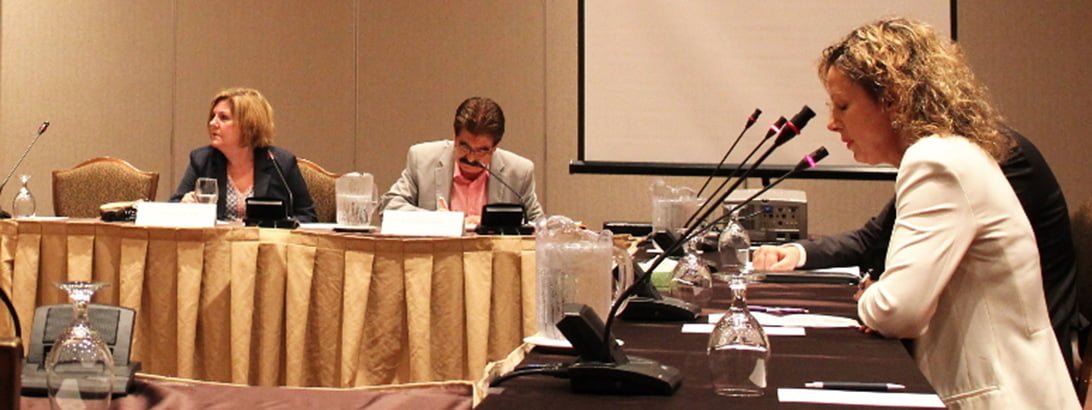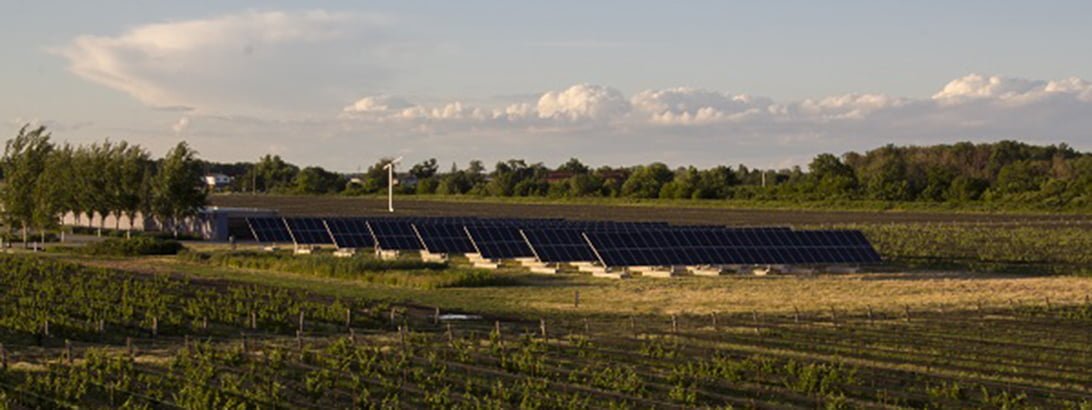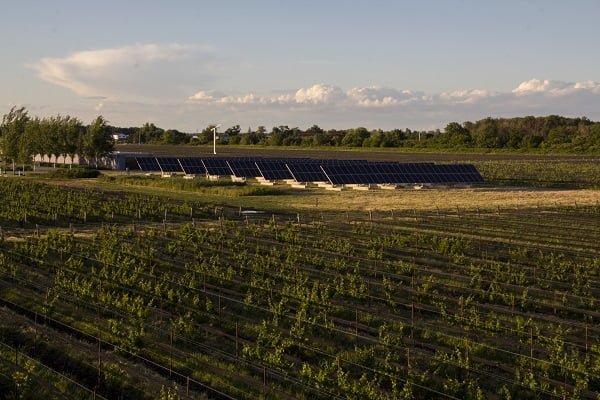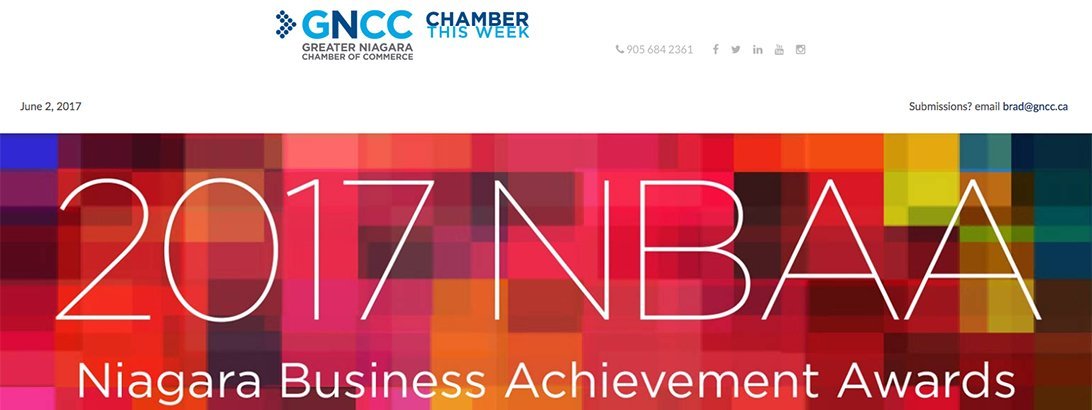
Re: Bill 148, Fair Workplaces, Better Jobs Act, 2017
On behalf of the Greater Niagara Chamber of Commerce (GNCC), the 1,600 members it represents, and the 50,000 people they employ, it is our hope that the Standing Committee will consider this written submission in its deliberations over Bill 148, the Fair Workplaces, Better Jobs Act (2017).
This submission consists of three parts: the concerns of the business community, testimonials from Niagara employers, and finally, our recommendations for the enhancement of Bill 148.
The three principles that guide our advocacy work are:
- That policy decisions be evidence-based and data-driven
- That collaboration with key stakeholders is critical
- That policy decisions must be undertaken in a socioeconomically holistic manner.
With those three principles in mind, we wish to communicate the following from our members and Niagara’s business community.
Concerns
At the GNCC, we strongly believe in evidence-based policy. We advocate for substantial research into policy decisions and legislation, and the more far-reaching the effects of such legislation would be, the more important good research is. To date, the Government of Ontario has not provided sufficient research into what will be a policy change of enormous economic impact, and that as a result, the side-effects will be unpredictable both in scope and in magnitude. Economic policy must be shaped purposefully and deliberately.
Under the previous arrangement, minimum wage would increase annually in line with inflation, as determined by the commonly-used Consumer Price Index (CPI) model.
This was sound policy, and the GNCC supported it. It made wage increases predictable, and employers could plan their future payroll expenses accurately. It was fair to employees, making sure that their earnings were not devalued over time, and it was fair to employers, who were not being asked for sudden and large payroll increases but only for increases that were offset by inflation.
In addition, the proposed increase to minimum wage is being introduced in a very short timeframe. Other $15/hr minimum wage policies across North America have been implemented in much longer timelines. Seattle, California, and New York have all opted to phase in their increases to $15 over 4 to 6 years. Ontario aims to accomplish 72% of the increase in just 7 months, and to complete the increase to $15 in one-and-a-half years.
Businesses make long-term plans and commitments. They have signed contracts, leases, and collective agreements based on promises that Premier Wynne and Minister Flynn had been making up until a matter of weeks before the increase was announced – promises in which the Government of Ontario reiterated its commitment to abide by the existing minimum wage standard. These contracts and leases would be costly to break, but will also be costly to fulfill due to increased costs. A greater lead time would allow businesses to plan long-term and avoid these costs.
The GNCC understands that the Government of Ontario seeks to assist people in poverty who need relief, and quickly, but there are already a great many tools and programs to relieve poverty, and could simply utilize and perhaps expand upon those if the alleviation of poverty were its goal.
Many businesses have reported that although they might be able to adapt to $15/hr, they will be unable to do so in the timeline laid out. This will force them to lay off staff, cut hours, or even close. A longer timeline would help businesses adapt, avoiding many of the negative employment effects associated with minimum wage increases. The report of the Government of Ontario’s 2014 Minimum Wage Advisory Panel found that larger increases were associated with larger negative employment effects. Their research supports the idea of a slower, staged approach to reaching $15/hr in order to minimize these effects.
The Government of Ontario’s two-year-long Changing Workplace Review is an admirable, data-driven approach to policy, yet the Review did not study minimum wage, and the move to $15/hr did not even take into account the government’s own 2014 Minimum Wage Advisory Panel.
Their report indicated that significant negative employment effects were associated with minimum wage increases, and that such effects were concentrated more on full-time, permanent workers, on women, and on young people. Every 10% increase to minimum wage resulted in a 3-6% increase in youth unemployment, the government found, and the larger the increase was, the closer to 6% was the youth unemployment effect. These drawbacks have not been acknowledged in Bill 148.
While there are studies which support a conclusion that minimum wage increases do not cause negative employment effects, virtually all seem to be from the United States, and the government’s 2014 panel concluded that U.S. data held little relevance for Canada, whereas Canadian and OECD data held much. There are, of course, many other studies which show that there are negative employment effects, some concerning the same jurisdiction. The Committee is no doubt aware of competing and conflicting academic studies of Seattle’s increase, for instance, some of which show no negative effects, while others – one of which was released only a short while ago – show negative effects such as the monthly take-home of low-income Seattle workers having decreased by $125 since the increases began.
These conflicting reports from other jurisdictions are another reason why a specific, Ontario-based study of this policy needs to be done, and why it should be done before implementation of the policy.
A full economic analysis would also help the government anticipate and plan for the economic effects that this would have. The three industries most affected by this legislation will be retail, accommodation and food service, and agriculture. We also note that these are three of Niagara’s most important industries, collectively employing 62,500 people in the region – 28% of our total workforce.
Agriculture in Ontario operates at an operating profit margin of 19.7%, but this is heavily skewed towards large farms. The average net operating income for a farm with a revenue between $10,000 and $50,000 has been negative for years, and those with revenues between $50,000 and $100,000 make an average of less than $11,000 a year. Only very large farms have the margins to absorb these labour cost increases, and this policy will have the effect of forcing family farms to close in favour of large agribusinesses. As a Chamber representing many small and family-operated agribusinesses, we ask what type of consultation with either the Ministry of Agriculture, Food and Rural Affairs or any stakeholders from rural Ontario or the agricultural community has taken place.
Retail has been under assault from the forces of globalization and the realities of a new and pervasive online marketplace. Recent high-profile retail closures include major brands like Future Shop, Target, and now Sears, indicating that size and market share are no safeguards against these forces. Again, margins are thin, with operating profit margins in Ontario at only 4.9%, while non-store retailers make only 3.7%. This sector is under huge pressure from online competition, and the latest proposals from the United States request an increase in the de minimis threshold to $800 from the current $20. If passed, this would mean Canada’s retailers are fully exposed to cheap, tax-free imports from American retail giants that dominate their retail space (only 22% of U.S. customers shop at non-U.S. retailers online, but 67% of Canadian consumers purchase goods line from non-Canadian retailers) and pay no sales taxes.
Payroll expenses as a fraction of total expenses for retailers are high, and are usually a retailer’s single biggest expense. This huge increase in that expense along with the fierce competition noted above makes it very hard for retailers to raise prices without suffering a corresponding loss of sales. Retail and wholesale trade is the largest industry by employment in Ontario, with over a million Ontarians earning their livelihoods in the industry. These side-effects on such a hugely important industry cannot be underestimated.
Accommodation and food service margins are similarly thin. The pre-tax margins for accommodations in Ontario are 9.5% (against 11.7% in Canada as a whole), 3.4% for food-service (compare to 4.2% in Canada or 6.3% in Alberta), 3.9% for limited-service restaurants, and 2.1% for full-service restaurants (against 2.8% in Canada, 4.9% in Alberta, or 6.1% in the United States). The Ontario margins are among the lowest in the country. Again, this industry simply does not have the capacity to absorb payroll increases of this magnitude when their margins are so thin – especially when payroll typically accounts for 30% of their total expenses.
The government has the option to consider relief for these specific industries and sectors which will be greatly affected by this legislation. Options include cuts to the small business and/or corporate tax rates, which have been implemented in Alberta, proposed by the Ontario NDP. For businesses not profitable enough to qualify or to benefit from a tax rate cut, the government might consider payroll credits or other wage subsidy programs, at least temporarily, to prevent unemployment.
A significant part of the cost of living in Ontario is due to a lack of viable public transit in many communities, including Niagara, necessitating car ownership in order to work and participate in social and public life. Other major factors include a lack of affordable daycare and housing, rapidly increasing electricity prices, the lack of universal pharmacare and dental care, and more.
We suggest that a public approach to Ontario’s social problems is necessary, and more effective than a blanket program since initiatives to address these issues would specifically target those suffering from them, rather than attempting to reward everyone regardless of whether or not they were affected.
Apart from the minimum wage increase, we wish to draw the Committee’s attention to some other significant aspects of this legislation.
Under this plan, student minimum wage would be increased to $14.10 by 2019. Businesses have found that hiring students can pose problems: students are inexperienced and lack both job skills and ‘soft’ skills, generally requiring longer training periods and more hands-on management, necessitating a greater management overhead per capita for staff. Businesses hiring students were willing to take them on because the lower wages paid to them offset these additional costs. This was still beneficial to students who did not need higher incomes as they were not supporting households, and who could acquire work experience and job skills in advance of their graduation and the launch of their careers in earnest.
However, many businesses have communicated to us that at these new wage rates, employing students is no longer viable. They would simply prefer to hire non-student workers, even on a seasonal basis. This does a disservice to students, who are not only unable to earn income outside class hours, but are denied the opportunity to build real work experience. If the student minimum wage is to be raised to $14.10, we recommend that a policy to incentivize student hiring along the lines of, for example, the Youth Employment Fund be implemented.
Organizations with fewer than 50 employees have expressed concern regarding exemptions for personal emergency days and so forth which, it is proposed, will be ended. These exemptions existed for good reason: small organizations do not have the flexibility to absorb sudden staffing changes on short notice. A retail store with only three staff, for instance, may have no alternative but to close for a day if an employee needs a personal day, with associated losses.
However, we also recognize the fact that the needs of employees do not change due to the size of their employer. We propose that a sliding scale of exemptions be implemented, perhaps ranging from full exemptions for organizations with fewer than five employees to full implementation for those with more than fifty, and a staged implementation in between. This would enable the government to fulfill its goals while lessening the impact on businesses.
Testimonials
As part of its advocacy work on this topic, the GNCC reached out to local businesses asking for their stories concerning Bill 148, and this submission includes a selection of narratives from this outreach. Although they are negative, it should be noted that they are not cherry-picked. We asked those with positive opinions to share them, but the GNCC did not receive a single submission from a Niagara organization that supported Bill 148, and we have not conveyed supportive stories simply because there were no supportive stories to convey. Even our members in the non-profit and charitable sectors did not express support to us in response to our outreach campaign.
A local telecommunications firm indicated that although their workers were paid more than $15/hr already, they would “definitely never” hire students at the new wage rate. Losing the small business exemptions would also be very hard on them, as they would have great difficulty accommodating sudden personal days and emergency leave. They also feared that some workers would exploit the legislation and treat the new allowance as additional vacation days to be taken at-whim, especially given the proposed rules against medical documentation.
A local services firm described the bill as “devastating.” They operate one site of a U.S. company that has several other sites in the United States, and despite extensive attempts, they “can’t see a financial benefit to keep the site open in Canada once minimum wage hits $14/hr.” They foresee their U.S. owner simply moving all the work back to U.S. sites where minimum wages are far lower and closing the Niagara location, which would mean the loss of 200 full-time jobs with benefits and bonuses. Other firms in the same industry have indicated similar fears as they are competing with locations in the United States, India, and the Philippines where wages are far lower. Additionally, serving mainly U.S. clients, increased consumer spending in the Ontario economy would not result in any increased revenue for these firms.
Collectively, they employ around 2,000 individuals in Niagara. Their closure alone would push Niagara’s unemployment rate up almost a full percentage point at a time when said unemployment rate is already higher than Ontario’s and trending upwards.
A major construction materials and environmental solutions company reported that although their workers are also paid more than $15/hr, there would nevertheless be significant negative effects. Their wage increase for non-unionized employees would have to be cut from 1.8% to 1%, and their lowest seniority level would be eliminated owing to upward pressure on lower-end wages. They will hire fewer temporary workers and will eliminate their summer programs entirely as there will no longer be any associated cost savings. They also anticipated that their emergency customer service labour costs would triple, and this would have to come out of the wages of all other employees.
A Niagara retailer employing over 230 people mainly competes against a firm in Tennessee, where the minimum wage is approximately $9.20 CAD. This retailer sells a commodity product and thus cannot raise prices, and with 83% of its sales made outside Canada, again, the government’s assumed increased consumer spending in Ontario benefits the firm very little. Although the firm does not anticipate closure, they will be forced to eliminate benefits, extra paid days off, annual bonuses, and their four-week paid vacation allowance. They will also have to eliminate summer student employment, cut hours and staff, invest in automation, and outsource some aspects to the business to U.S. firms.
Another retailer, who has been in business here for over a century, also told us that there was no way they could raise prices to cover this enormous increase in costs. Lower prices would only result in more business lost to American e-commerce competition. If implemented, the legislation would force this firm to close half of its locations in Niagara, with attendant job losses for all the staff working there.
A third retailer, operating a local grocery franchise, reported that as a result of Bill 148, they would have to cut staff hours back by 25% and raise prices. The payroll increase alone, per year and not including taxes, is equivalent to over 10,000 staff hours which would have to be cut. The mandatory sick leave would mean around another 5,000 staff hours, and the increase in annual vacation another 1,000. The total cost to this retailer would be over a quarter of a million dollars annually, and with the thin margins that retailers operate at, this would have to be made up in either cutbacks to hours, increased prices, or both.
A veterinarian services firm reported that in order to pay their staff, the founders themselves were not drawing a regular salary. While they had hoped to redress that next year, Bill 148 would make it impossible, and the founders of the firm will have to continue to supplement their incomes with second jobs, while probably cutting back the hours of their staff. The firm greatly values its “fantastic” employees and fears that with the cuts they will be forced to make, they might lose them altogether.
These are a few of the many stories the GNCC has heard, and continues to hear, from businesses who will be affected. We hope that the Committee will consider not just the abstract economic effects of this policy, but the very real harms that will be visited upon working Ontarians if it is not revised.
Recommendations
The GNCC thanks the Committee for its invitation to make a presentation in Niagara Falls and for being able to share in the dialogue over this legislation. In the spirit of collaboration in which we conduct our advocacy work, we wish to summarize our recommendations for the committee to consider as it deliberates Bill 148:
We reiterate our request for a full economic study and impact analysis to be completed before the government commits to implementing this policy. It is crucial that the effects of such an important piece of legislation be understood better.
We ask for a slower and phased implementation as other jurisdictions have opted for. Many businesses have communicated that their odds of successfully navigating these changes would be vastly increased with more time to adapt. We suggest a timeline measured in years, not months, with a gradual ramp to the $15/hr figure.
We recognize that there are many Ontarians living in poverty who need help, and quickly. We suggest that rather than putting the burden for dealing with this on businesses via minimum wage hikes, the government use and enhance its existing tools and programs, or create new ones, to deal with them. It is fair and reasonable to use public funds to deal with public problems.
To offset the losses in student jobs, we suggest that the government introduce new or expanded programs to incentivize hiring students.
As minimum wage increases, the proportion of covered expenses through employment programs offered by Employment Ontario agencies will necessarily decrease, which will lessen the impact of those programs and decrease the number of Ontarians effectively served. We suggest that the funding and eligibility for these programs be similarly expanded to ensure that they continue to be viable and effective.
The cessation of small organization exemptions will place many such organizations under financial strain. Rather than simply eliminating such exemptions, we suggest a sliding scale of exemptions which will allow small organizations to operate flexibly, will not discourage expansion and hiring, but will also recognize the need of employees for personal leave, sick leave, and so forth.
As has been introduced in Alberta and proposed in Ontario, we support a compensating cut in the small business tax rate. We also note that the government pledged to reduce the corporate income tax rate to 10% by 2013, which was abandoned in 2012 at only 11.5%. The full reduction has been estimated as being capable of generating 591,000 net new jobs and increased annual incomes of $29.4 billion. We encourage the government to return to this promise.
Finally, it must be recognized that tax cuts would not affect all businesses, especially those with margins so thin – or nonexistent – that they pay little or no tax. We suggest that for businesses in this situation, a payroll credit to encourage job creation and mitigate the effects of minimum wage would be sound policy. To save on government expenditures, this could be tapered off over several years if necessary, giving employers time to adjust to the new regime.
We hope that the committee will consider these recommendations and act to safeguard Ontario employers and Ontario jobs in its findings on this legislation.
















































